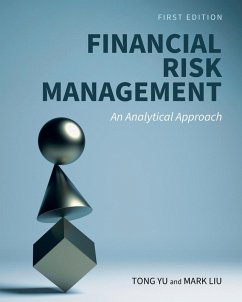
Enterprise Risk Analytics for Capital Markets
Proactive and Real-Time Risk Management
Versandkostenfrei!
Versandfertig in 1-2 Wochen
22,99 €
inkl. MwSt.

PAYBACK Punkte
11 °P sammeln!
While quantitative models can help predict the trends in Capital Markets, forecasts don't always hold up and can quickly cause things to spiral out of control and can lead to global risk. In order to reduce systemic risk, the G20 committed to a fundamental reform of the financial system, to correct the fault lines, and to rebuild the financial system as a safer, more resilient source of finance that better serves the real economy. This requires Financial Institutions to develop sound Risk Management practices. In straightforward language, you'll learn about key components of risk management, i...
While quantitative models can help predict the trends in Capital Markets, forecasts don't always hold up and can quickly cause things to spiral out of control and can lead to global risk. In order to reduce systemic risk, the G20 committed to a fundamental reform of the financial system, to correct the fault lines, and to rebuild the financial system as a safer, more resilient source of finance that better serves the real economy. This requires Financial Institutions to develop sound Risk Management practices. In straightforward language, you'll learn about key components of risk management, including risk knowledge, risk quantification, risk data management, risk data aggregation, risk architectures, risk analytics and reporting, risk regulation. You'll also get definitions explaining how different financial products work, mathematical formulas with explanations, and insights on different asset classes, different approaches to hedging, and much more. This book Enterprise Risk Analytics for Capital Markets will help whether you are just beginning a career in risk management or advancing your career with in risk management.












